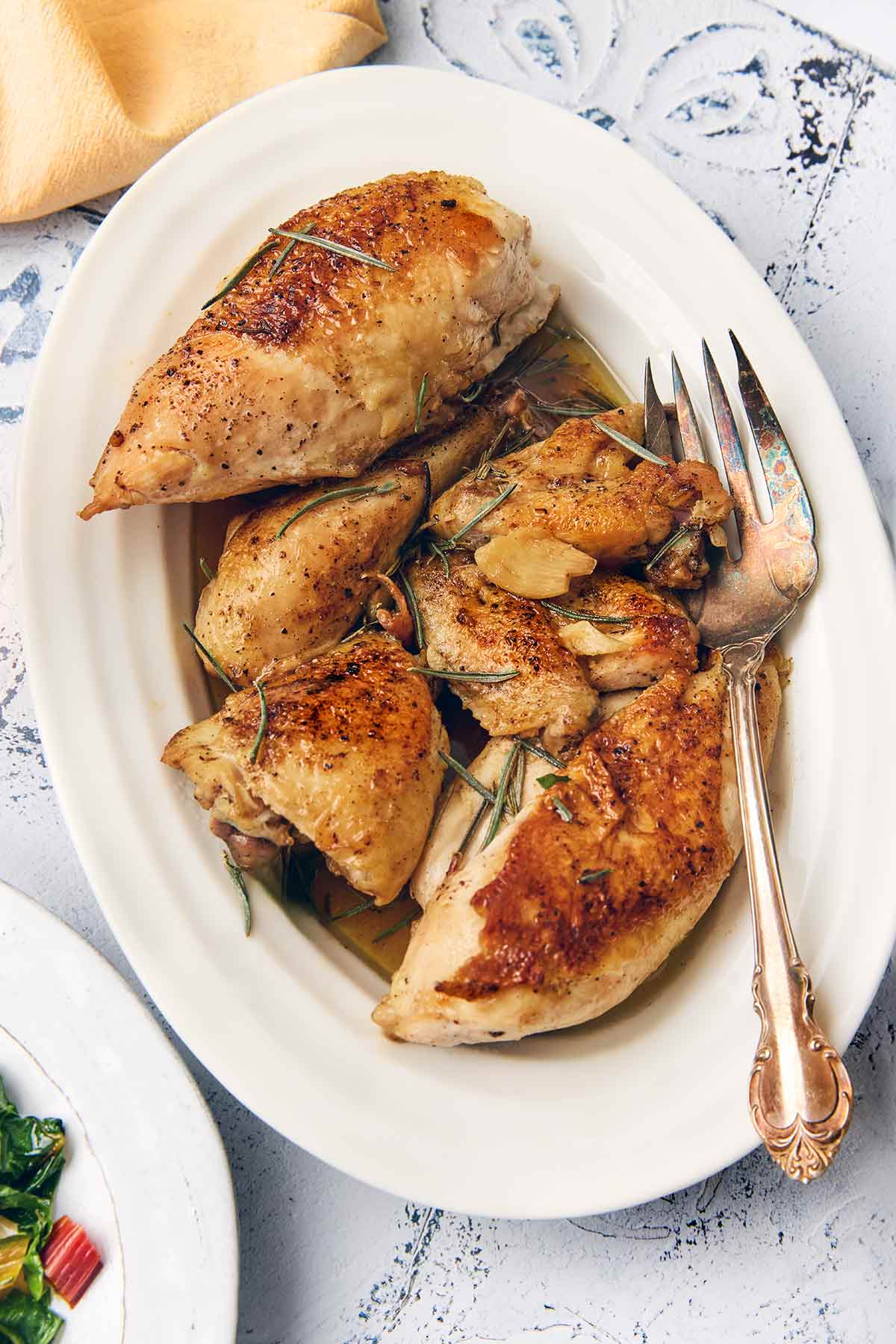
Before making this dish, classic tomato-based chicken cacciatore never really registered on my radar. And if I were on some form of culinary Jeopardy, I’m not sure I could even tell you the ingredients in the dish beyond chicken and, maybe, tomatoes.
So, I approached this pared-down chicken cacciatore recipe without preconceived notions. And, boy, am I sure glad I did. Because this blew away The One and me. Truly. We didn’t expect the chicken to be so falling-apart tender, to have a zing of acid from the vinegar and bass notes of umami from the anchovies. (Which, by the way, are an absolute must. Don’t skimp, or I’ll hunt you down….)
Jump To
We enjoyed this lighter, cleaner version of cacciatore so much that we made it twice in one week. And we agreed that it deserves a spot in our entertaining menu rotation.
It’s a cinch to make (with ingredients you probably have in your fridge and pantry), and takes all of 90 minutes (mostly hands-off time), which gives you time to whip up a salad or side dish. Or, even better, to put up your feet and knock back a cocktail or three.
Buon appetito!
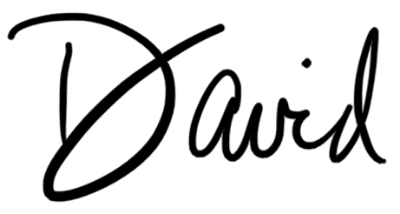
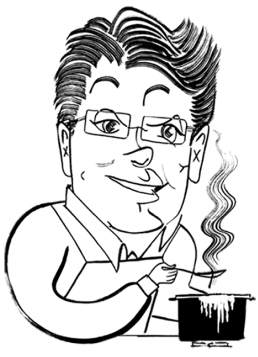
Why Our Testers Loved This
The testers adored the tender, fall-off-the-bone chicken this recipe produced and loved that it made for a “scrumptious, easy dinner” with minimal effort.
Notes on ingredients
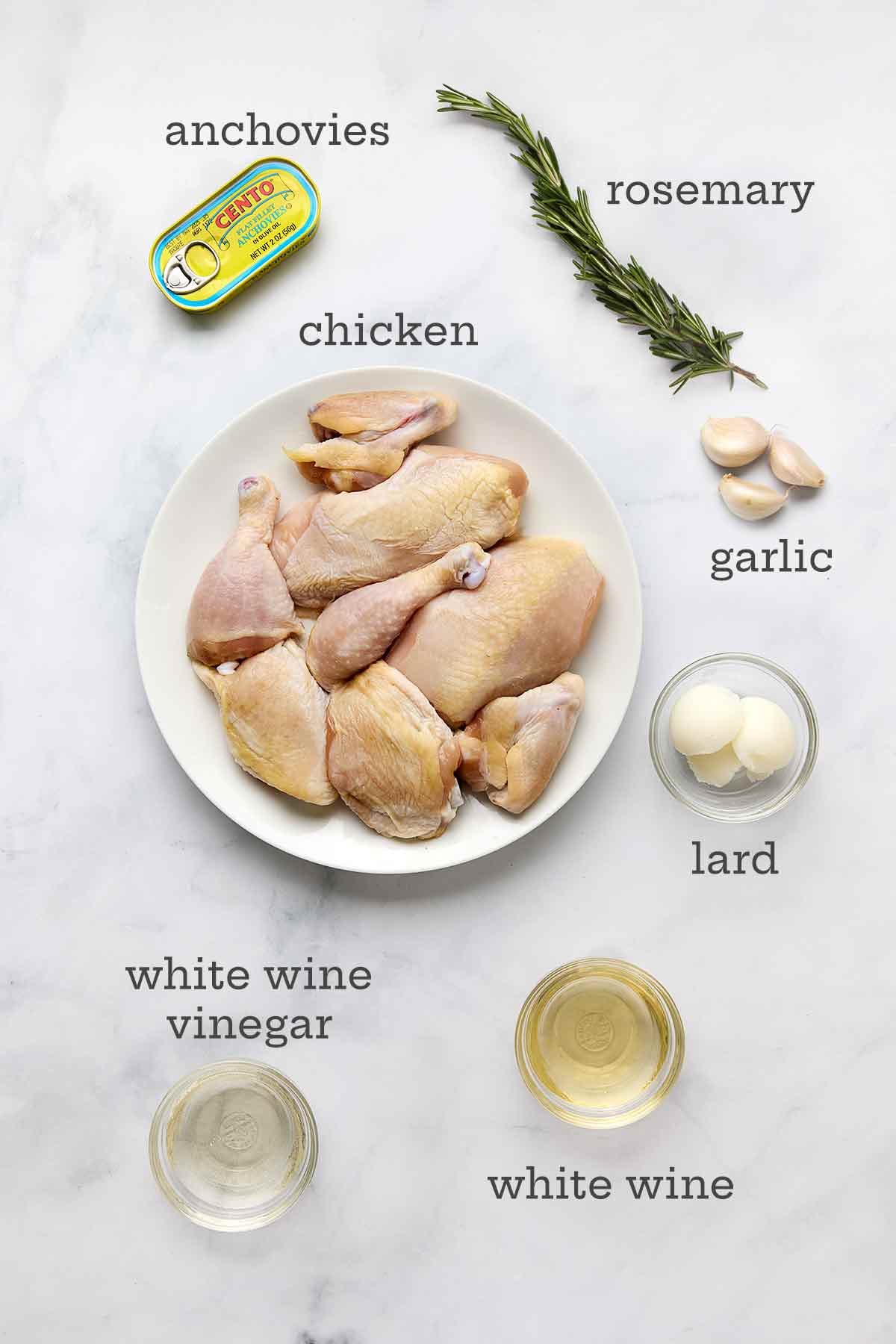
- Chicken–You can have your butcher break down a whole bird into 8 pieces, or you can make this with a combination of bone-in chicken thighs, drumsticks, and halved bone-in chicken breasts.
- Lard or olive oil—In the past, it was more economical to cook with lard (pork fat) rather than expensive olive oil. Lard has a higher smoke point than olive oil and imparts a subtle flavor to recipes. Either works here, but I urge you to use lard.
- White wine—For best results, use a dry white wine, such as Pinot Grigio or Sauvignon Blanc. Sweet wines will alter the flavor of the dish.
Step-by-step instructions
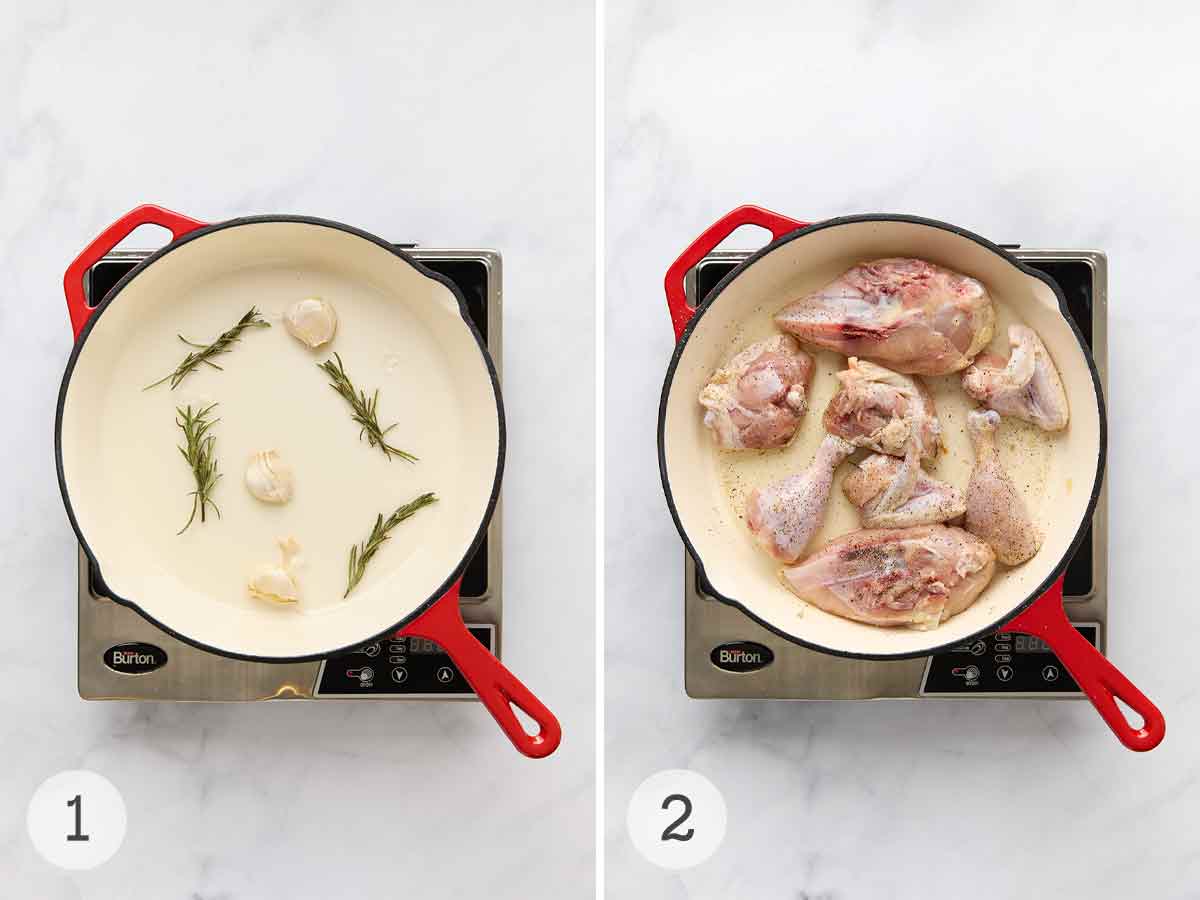
- Season the chicken pieces all over with salt and pepper. Heat the lard or oil in a large skillet or braising dish, then add the garlic and rosemary. Let cook until fragrant, then remove from the oil and set aside.
- Fry the chicken in the oil, turning occasionally, until golden brown all over.
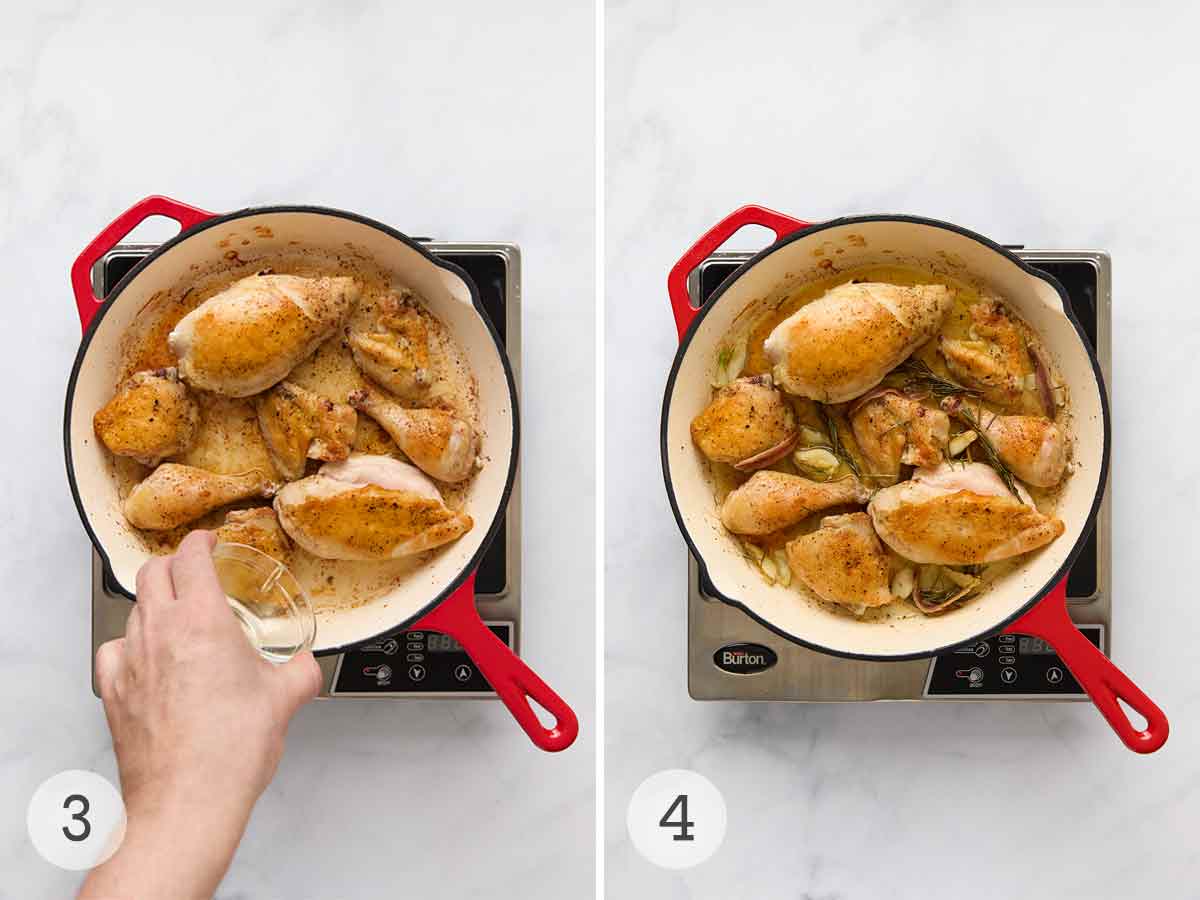
- Pour in the vinegar and wine and bring to a boil. Let it reduce for a few minutes.
- Add the anchovies and return the garlic and rosemary to the pan. Cover and simmer until the chicken is tender and pulls away from the bone.
Want to save this?
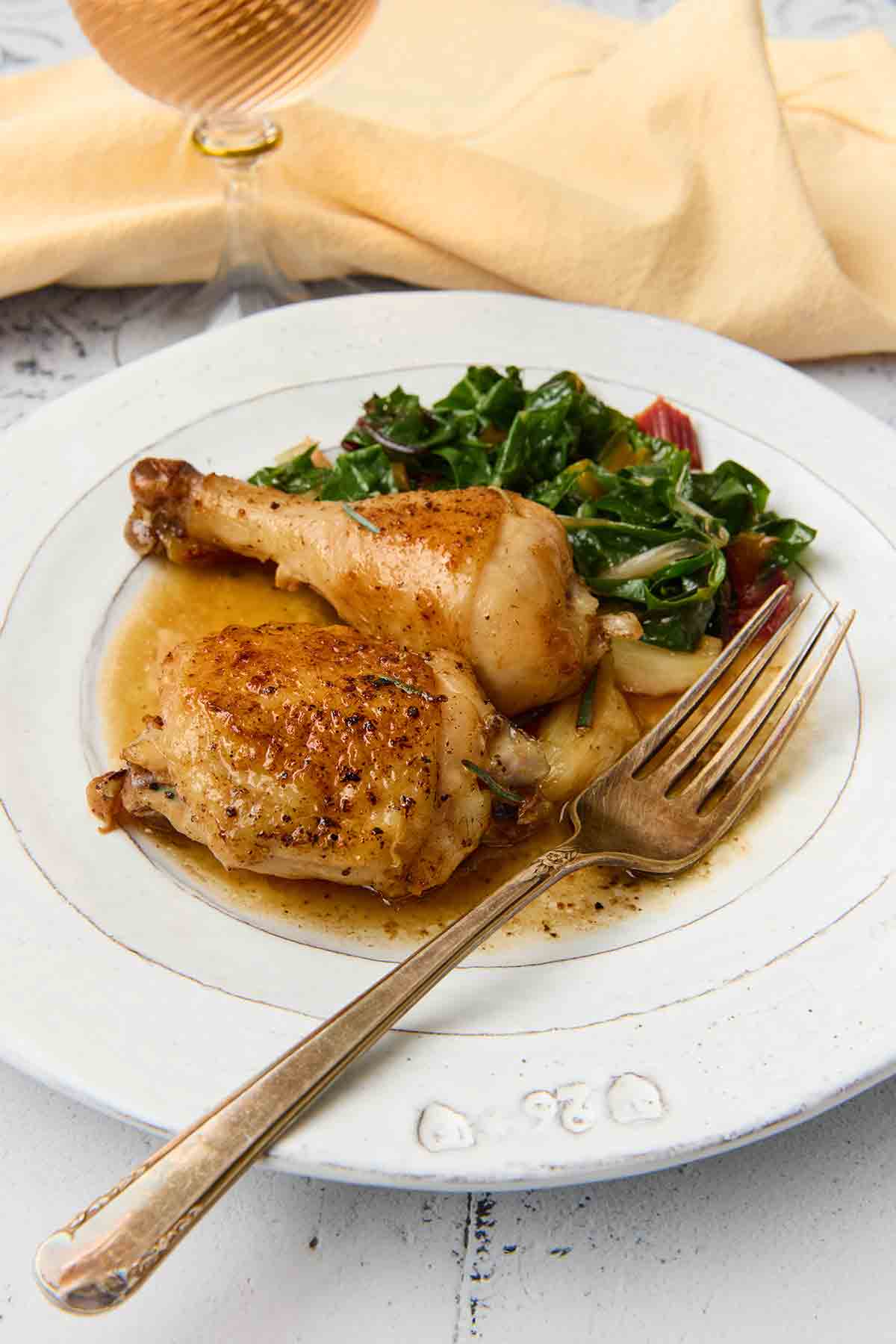
Common Questions
Where does the naming convention cacciatore, which in Italy is more traditionally referred to as “alla cacciatora,” come from? The authors explain that “cacciatora” means ‘hunter’s wife,’ and in times past, she would’ve had to rustle up a bubbling hot pot from anything her hunter hubby dragged home from a hunt.
Over the years, it became a moniker for a stew of mixed meats, usually cooked with tomatoes, wine, and herbs. This dish probably dates all the way back to ancient Rome, when tomatoes hadn’t been brought ashore from South America, and foods were often flavored with herbs, vinegar, and a dash of garum, the pungent anchovy sauce.
The hunter’s catch could be rabbit, chicken, lamb, guinea fowl (which has so much flavor), or even meaty fish such as swordfish or monkfish. There you have it. Perfect chit-chat for your next dinner party where this impressive yet easy recipe is the centerpiece.
I recommend sticking with bone-in chicken pieces when braising. The bones help to keep the meat tender and add flavor to the dish, and, as a result, you’re less likely to have dry, overcooked chicken.
Pro tips & troubleshooting
- Use a skillet, Dutch oven, or braiser big enough to hold all of the chicken comfortably.
- Don’t crowd the pan when frying the chicken pieces, and work in batches, if necessary.
- This recipe is suitable for gluten-free and dairy-free diets.
Storage and Reheating
You can store the cooked chicken cacciatore in a sealed container in the fridge for up to 4 days. Reheat in a braiser, skillet, or Dutch oven on the stovetop over low heat until warmed through.
What to Serve With This Recipe
I suggest serving this classic Italian chicken recipe with some creamy polenta and some blanched spinach or charred greens. This time around, I charred some fresh rainbow Swiss chard. It had just the right amount of bitterness to balance the dish.
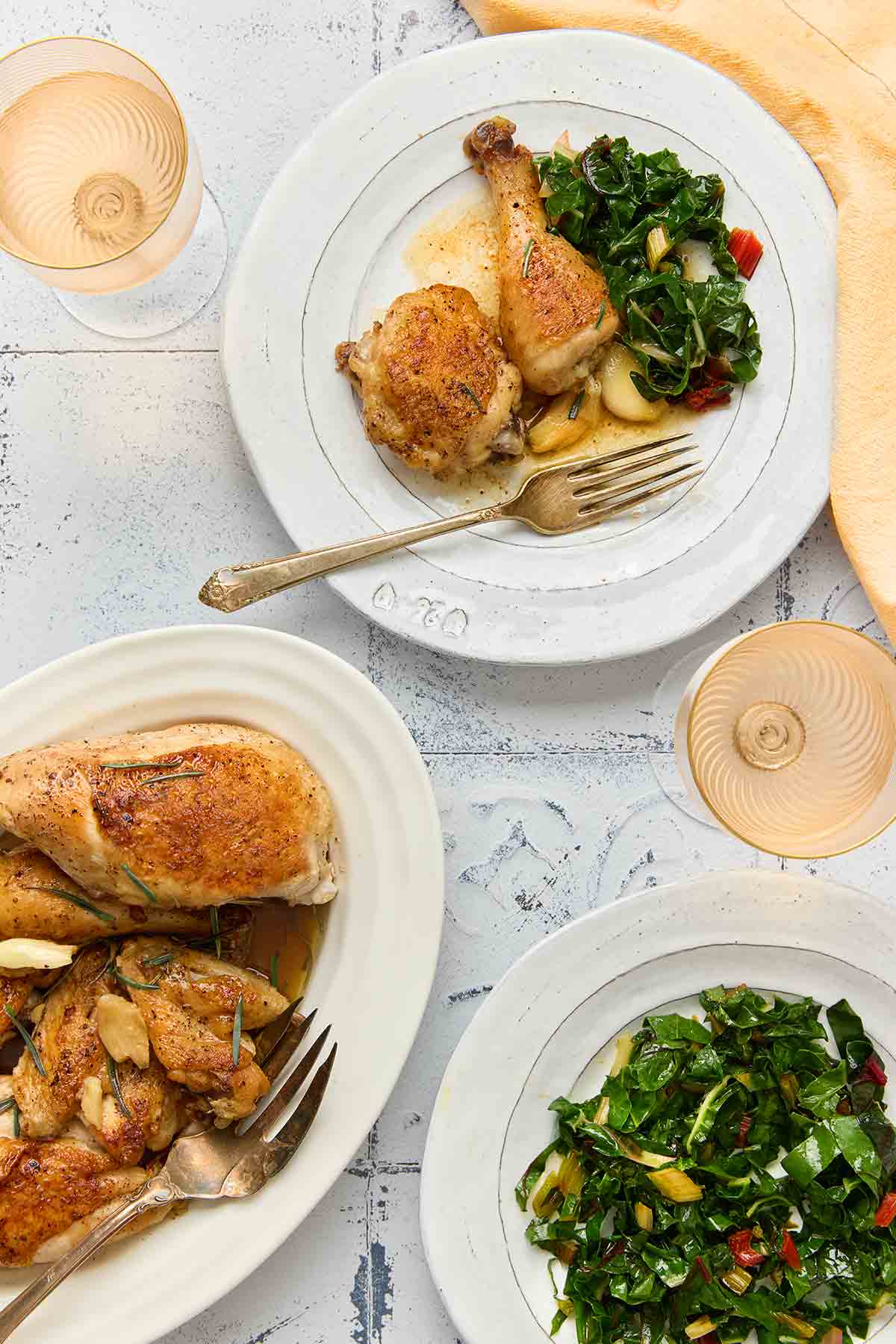
Write a Review
If you make this recipe, or any dish on LC, consider leaving a review, a star rating, and your best photo in the comments below. I love hearing from you.–David
I had a similar dish while in Rome, and it changed my life. I have been searching for a Roman cacciatore recipe ever since.
This is very close, although the one in Rome had an assortment of olives. Definitely a fantastic dish and real proof of Rome’s ancient secret weapon–the anchovy.
Vincent
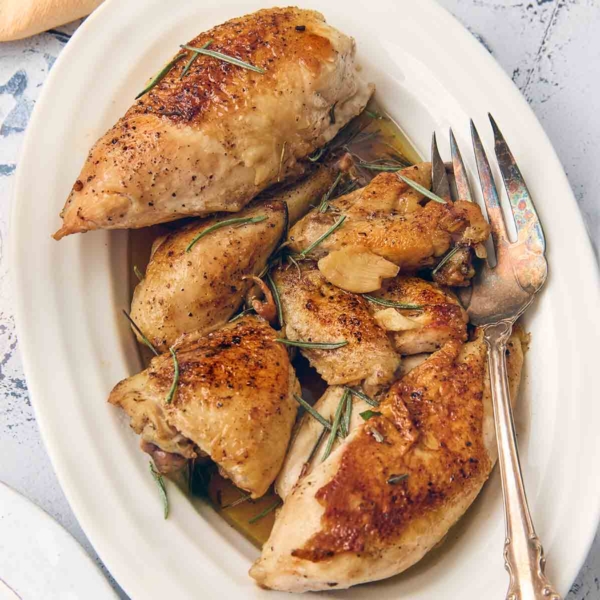
Roman-Style Chicken Cacciatore
Ingredients
- 2 1/2 pounds chicken, or guinea hen, cut into 8 pieces
- Salt and freshly ground black pepper
- 3 tablespoons lard, or extra-virgin olive oil
- 2 garlic cloves, unpeeled and lightly crushed
- Two (6-inch) sprigs rosemary
- ¼ cup white wine vinegar
- ¼ cup white wine
- 4 canned anchovy fillets, (if salted rinse well, if in oil don’t rinse)
Instructions
- Season the chicken pieces generously all over with salt and pepper.
- Heat the lard or oil in the biggest lidded skillet you have (or use 2 if you can’t fit all the chicken comfortably into 1 pan) and add the garlic and rosemary.
- Fry for 2 to 3 minutes over a medium heat until you can smell the herbs strongly; this will flavor the oil. Remove the herbs from the pan before they burn and set aside for later.
- Fry the chicken pieces on all sides until they're a rich golden brown, about 10 minutes.
☞ TESTER TIP: Be patient and don’t turn them too often; let them brown on one side and then turn to the other.
- Pour in the vinegar and wine and bring to a boil. Allow the liquid to reduce for a minute or two.
- Stir the anchovies and the reserved herbs into the liquid.
- Cover the pan and reduce the heat to a gentle simmer. Cook for 1 hour or until the meat falls easily from the bone. This will depend on your type of meat, so allow enough time for it to get marvelously soft. Check the pan every so often and add a little hot water if it looks dry.
- Adjust the seasoning as necessary and serve on soft polenta or with a side of simply sautéed greens.
Notes
- Don’t crowd the chicken–Use a skillet, Dutch oven, or braiser big enough to hold the chicken pieces comfortably. When frying the chicken, don’t crowd the pan and work in batches, if necessary.
- Dietary–This recipe is suitable for gluten-free and dairy-free diets.
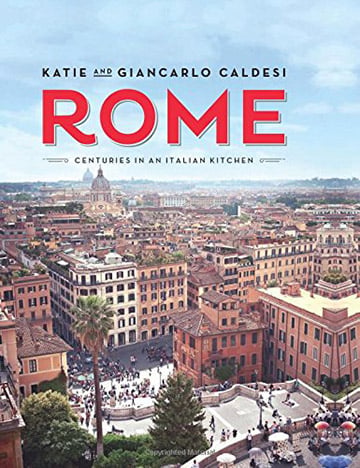
Explore More with AI
Nutrition
Nutrition information is automatically calculated, so should only be used as an approximation.
Recipe Testers’ Reviews
This version of chicken cacciatore without tomatoes has really won me over. What I loved about this version was the austere treatment.
I tried this with guinea legs and thighs and again with just bone-in, skin-on chicken thighs. I think it is easier to turn the smaller pieces in the pan for the browning, which you want to be very thorough, as this is the only time they’ll be able to pick up color. I also made sure that when finished browning, the skin side was facing up so they’d retain as much crispness as possible.
Use your best anchovies and really nice vinegar and wine. Next time, I’ll also make a nice batch of basic polenta.
This white chicken cacciatore was simple to make, had great flavor, and yielded tender, juicy chicken. Alongside sautéed spinach with bread crumbs, and balsamic roasted potatoes, it was a perfect Sunday supper.
Delicious chicken and gorgeous pan juices without much fuss. This recipe produced a scrumptious, easy weekend dinner for us. I decided to use chicken drumsticks to make it even simpler to prepare and more economical.
It took all of 45 minutes for the chicken to become fall-off-the-bone tender, and the pan juices tasted bright with the vinegar without being sharp. The aroma of rosemary was lovely.
I served the chicken with sautéed green beans, and the sauce and garlic were enjoyed with warm ciabatta bread. I shared this dish with the same taster, who also had Chicken with 40 Cloves of Garlic. We loved both equally!
We really enjoyed this Roman version of Chicken alla Cacciatora. The flavor of the rosemary, garlic, and vinegar came through perfectly.
Searing the chicken for 10 minutes gave it a lovely golden color and imparted great flavor. We used a white Bordeaux wine. I served the chicken with sautéed zucchini and roasted red potatoes.
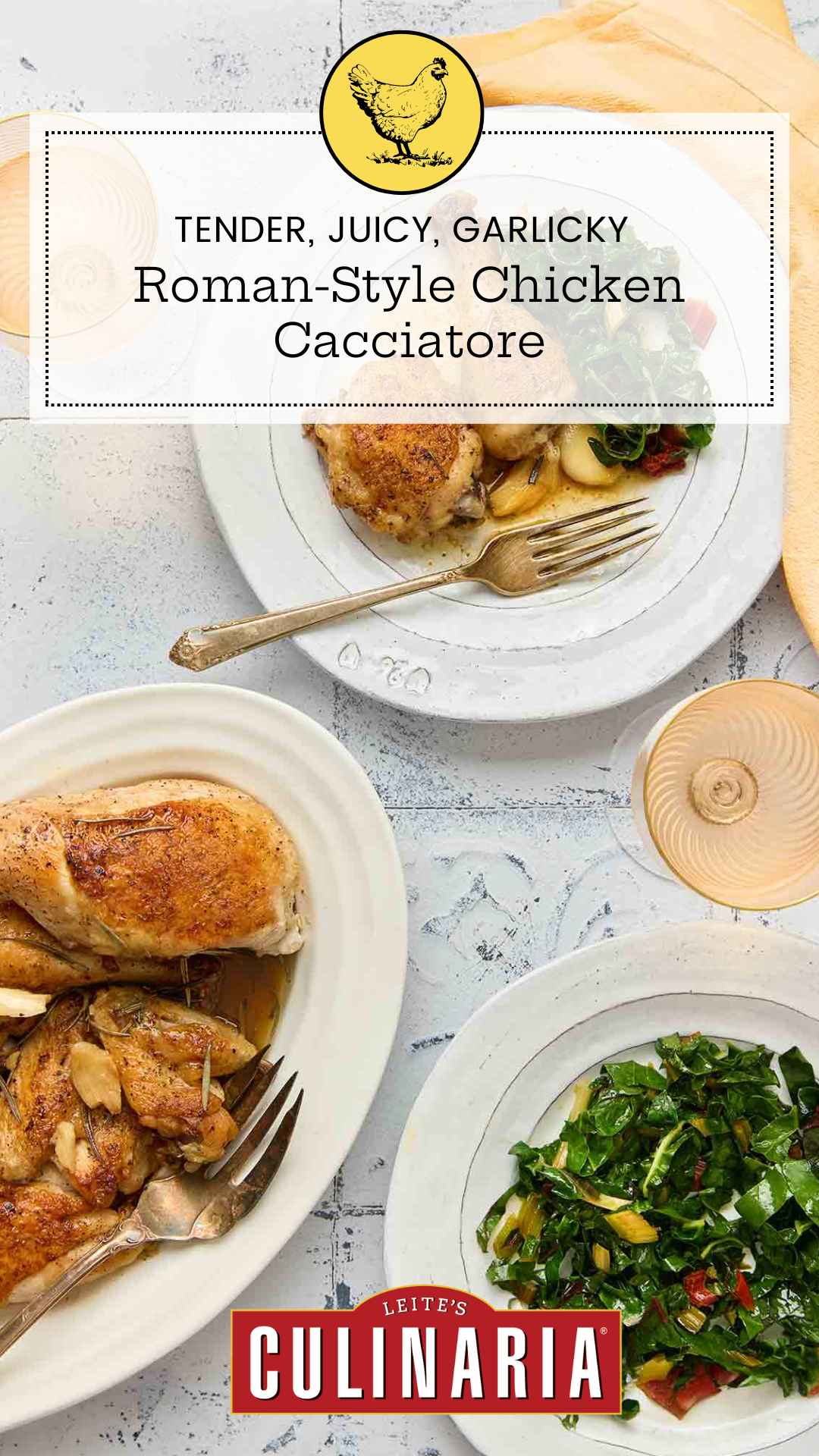
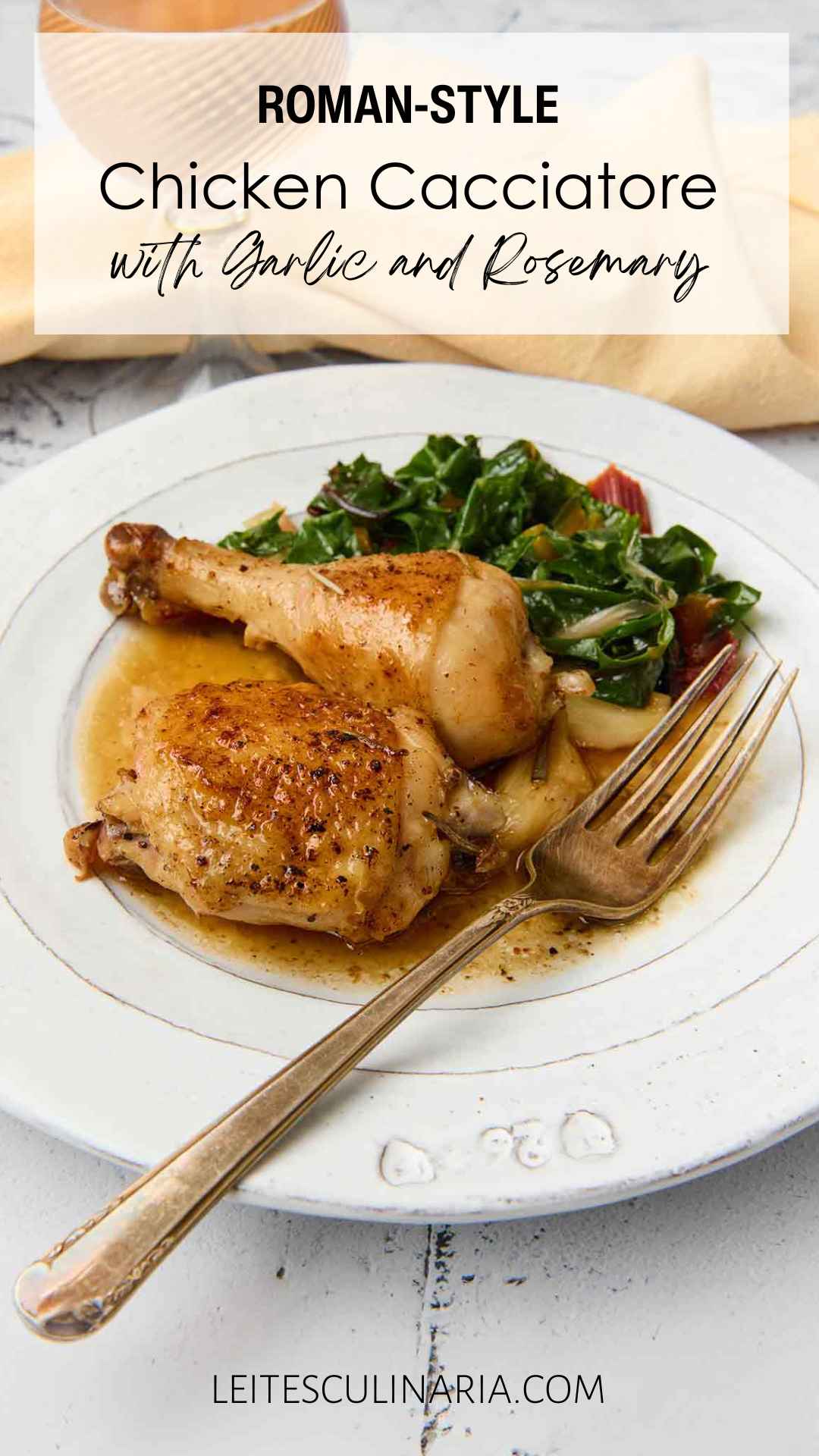
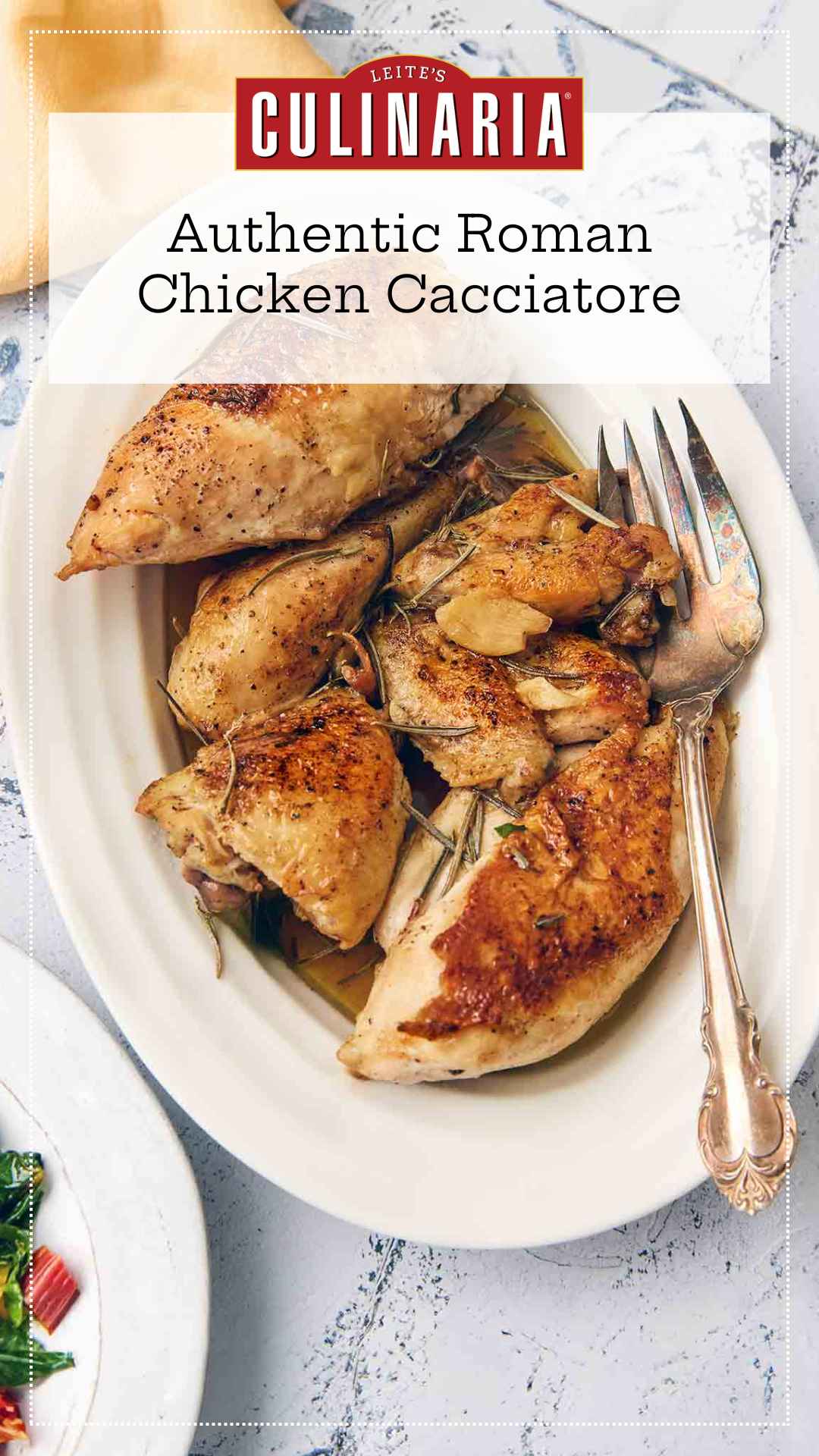
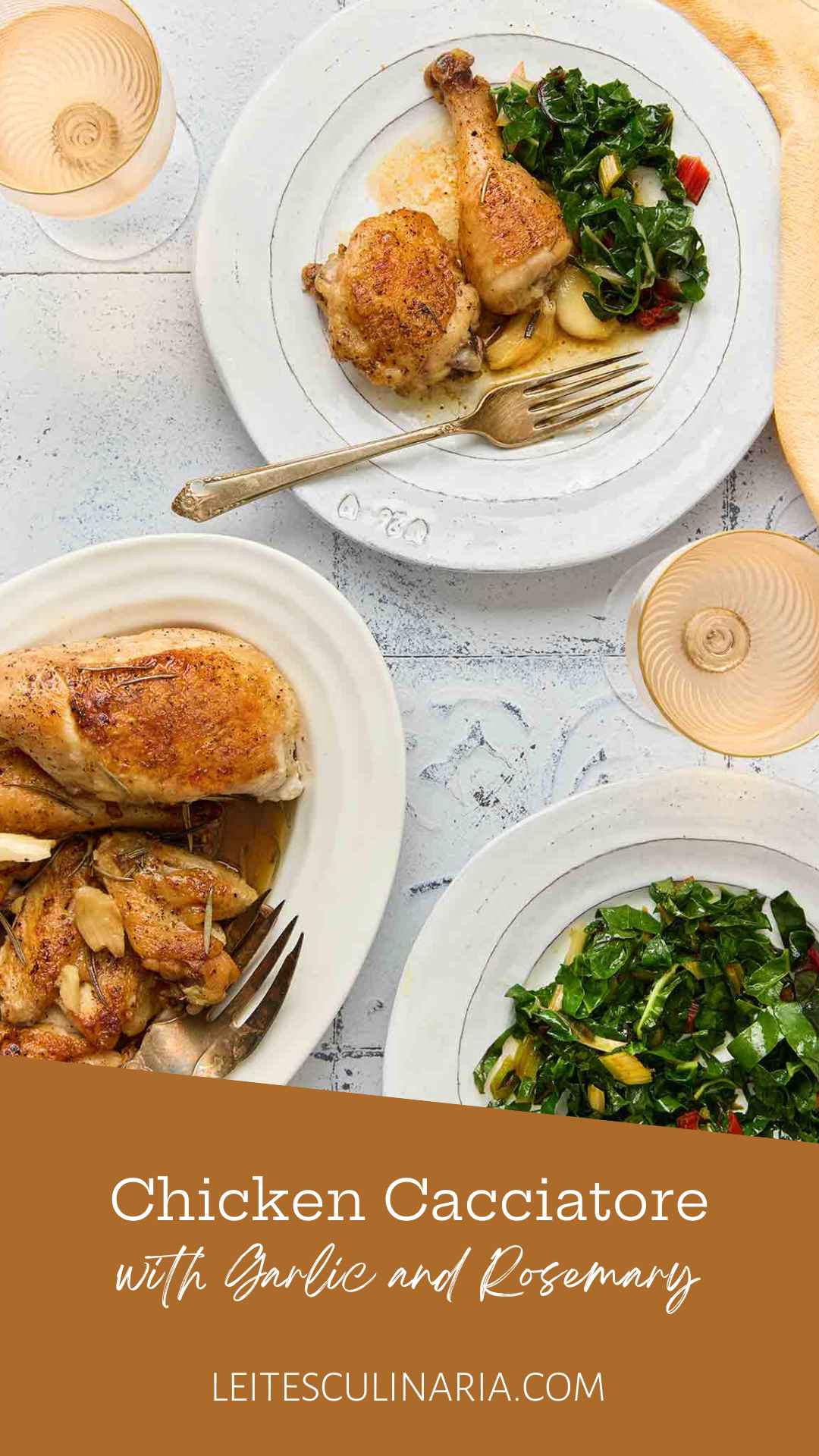
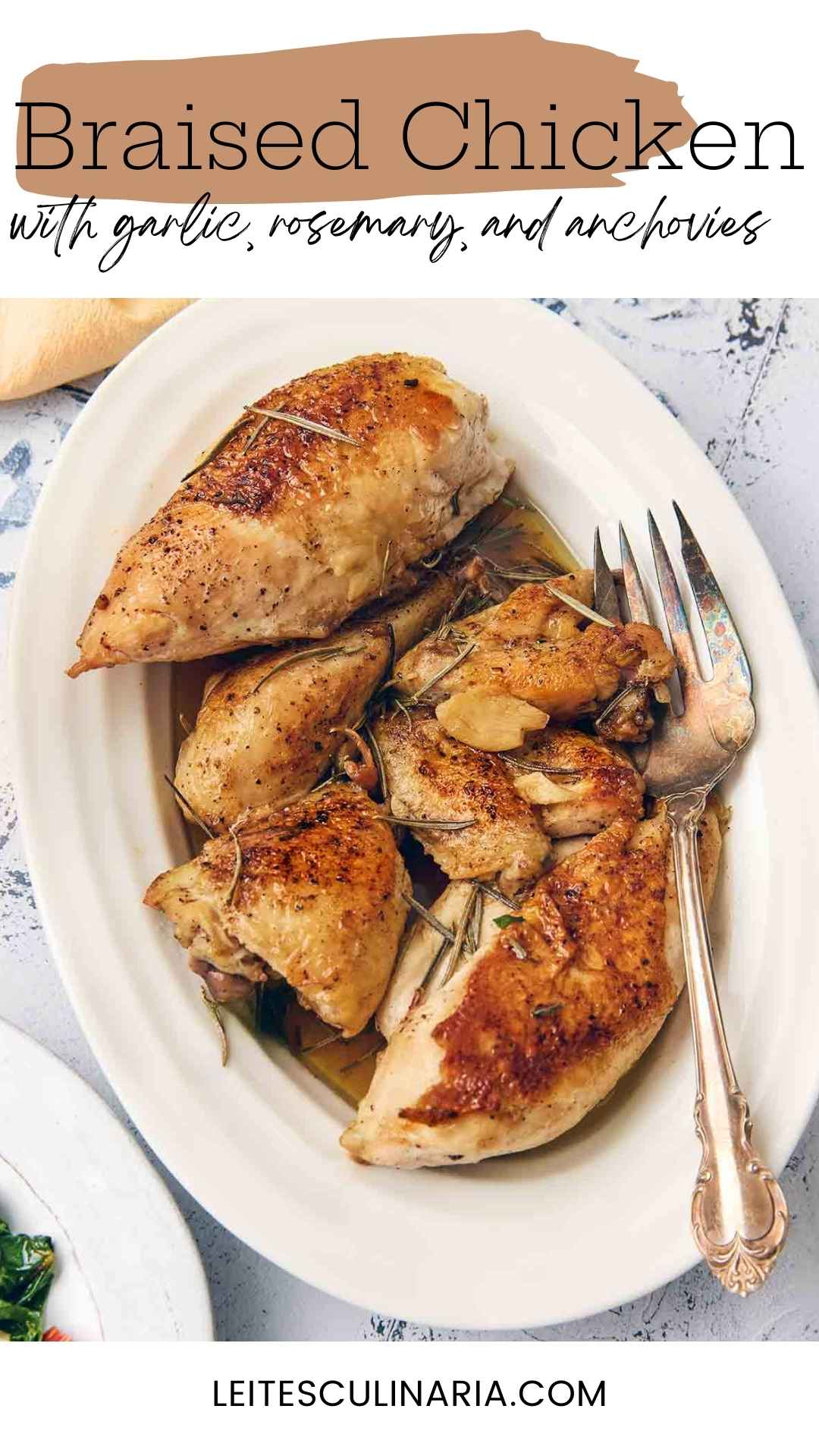
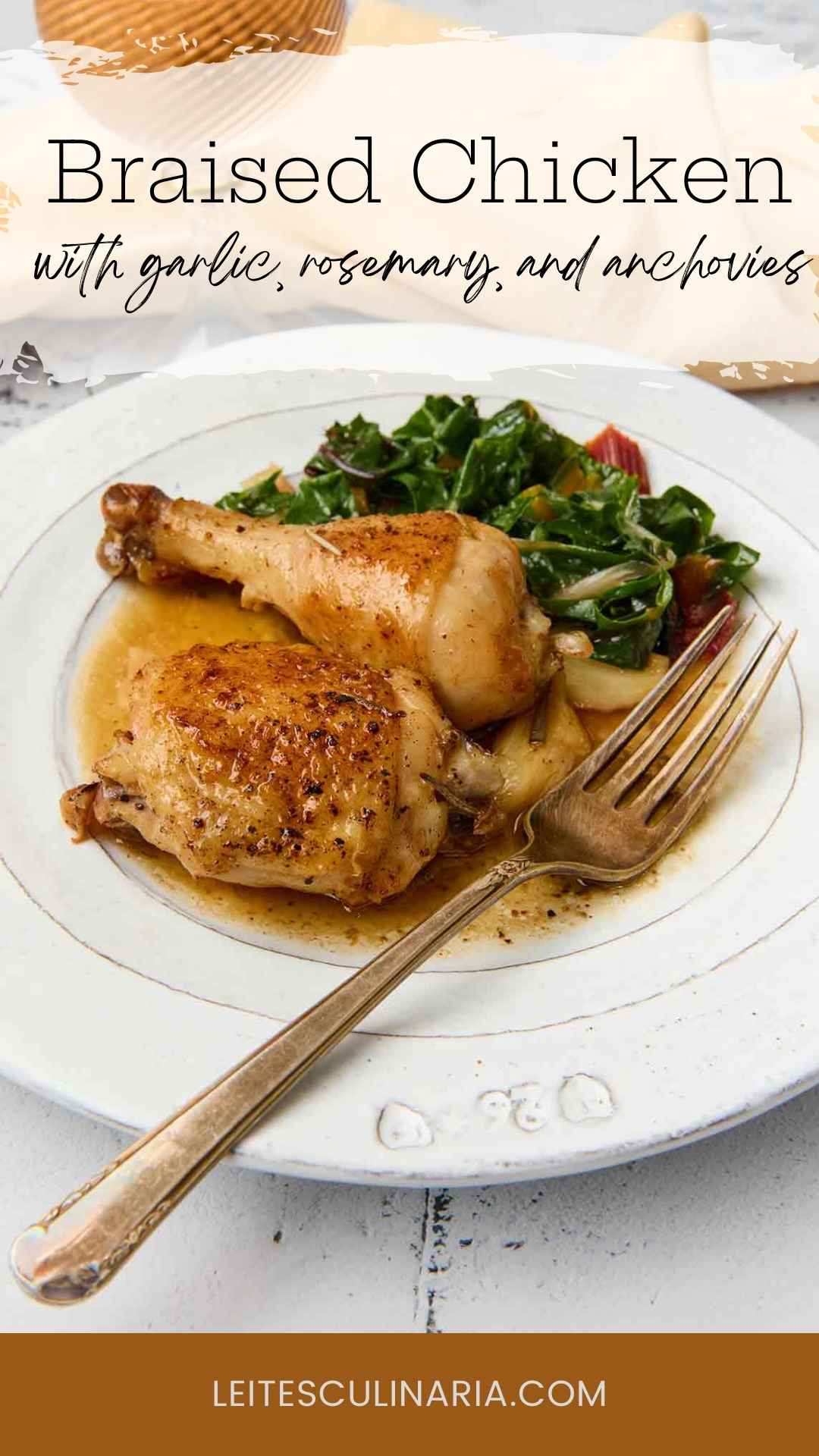
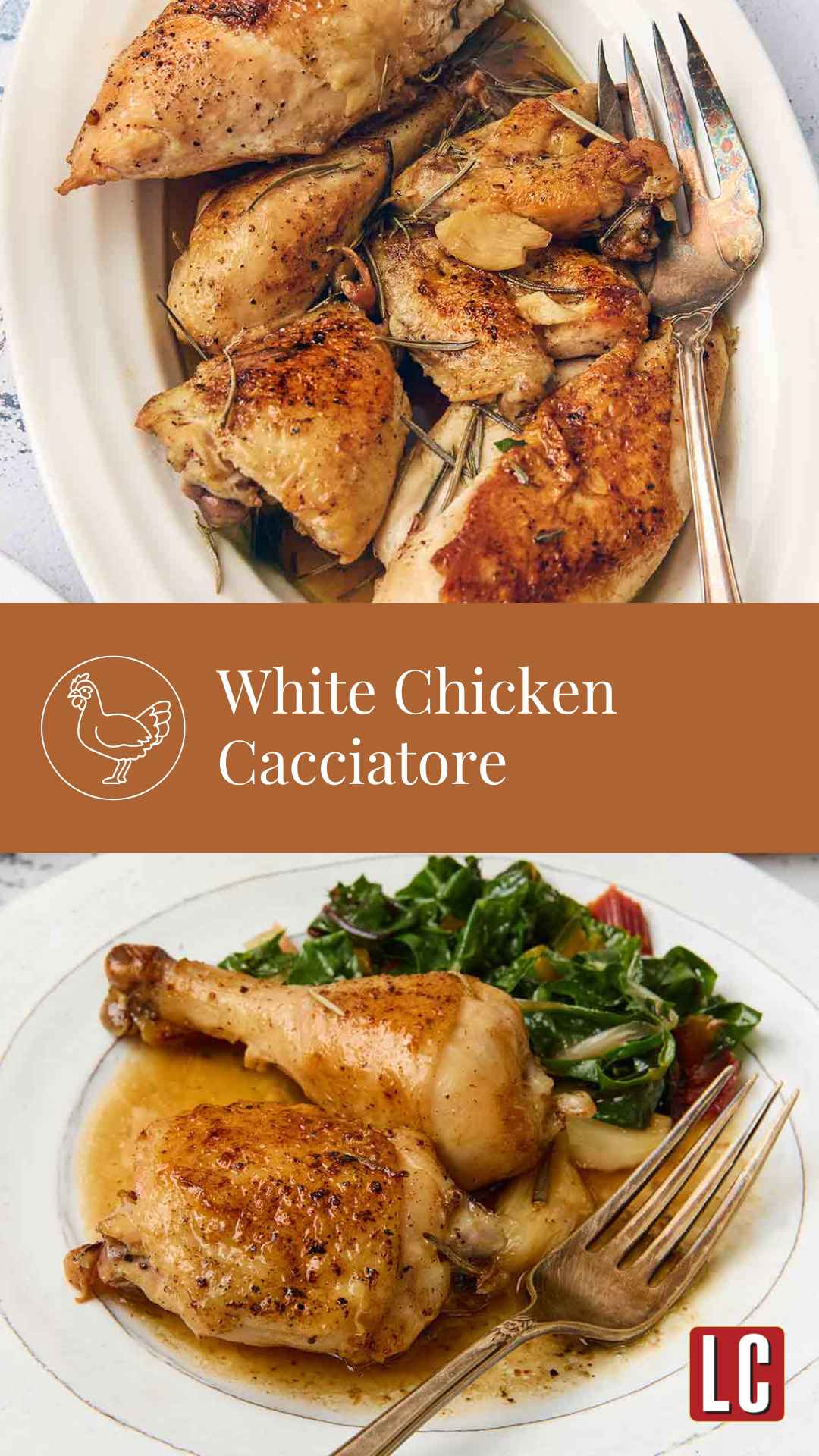
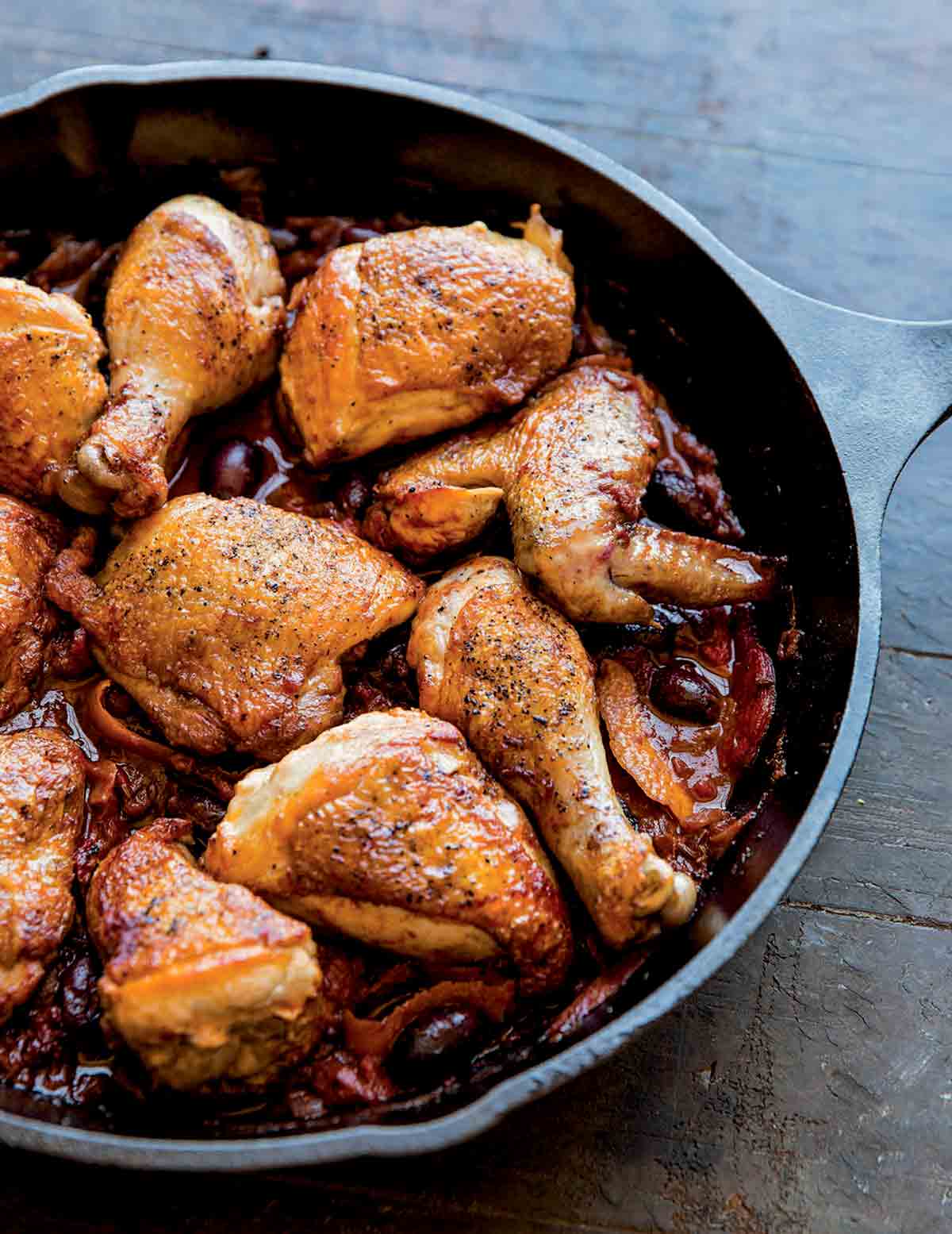
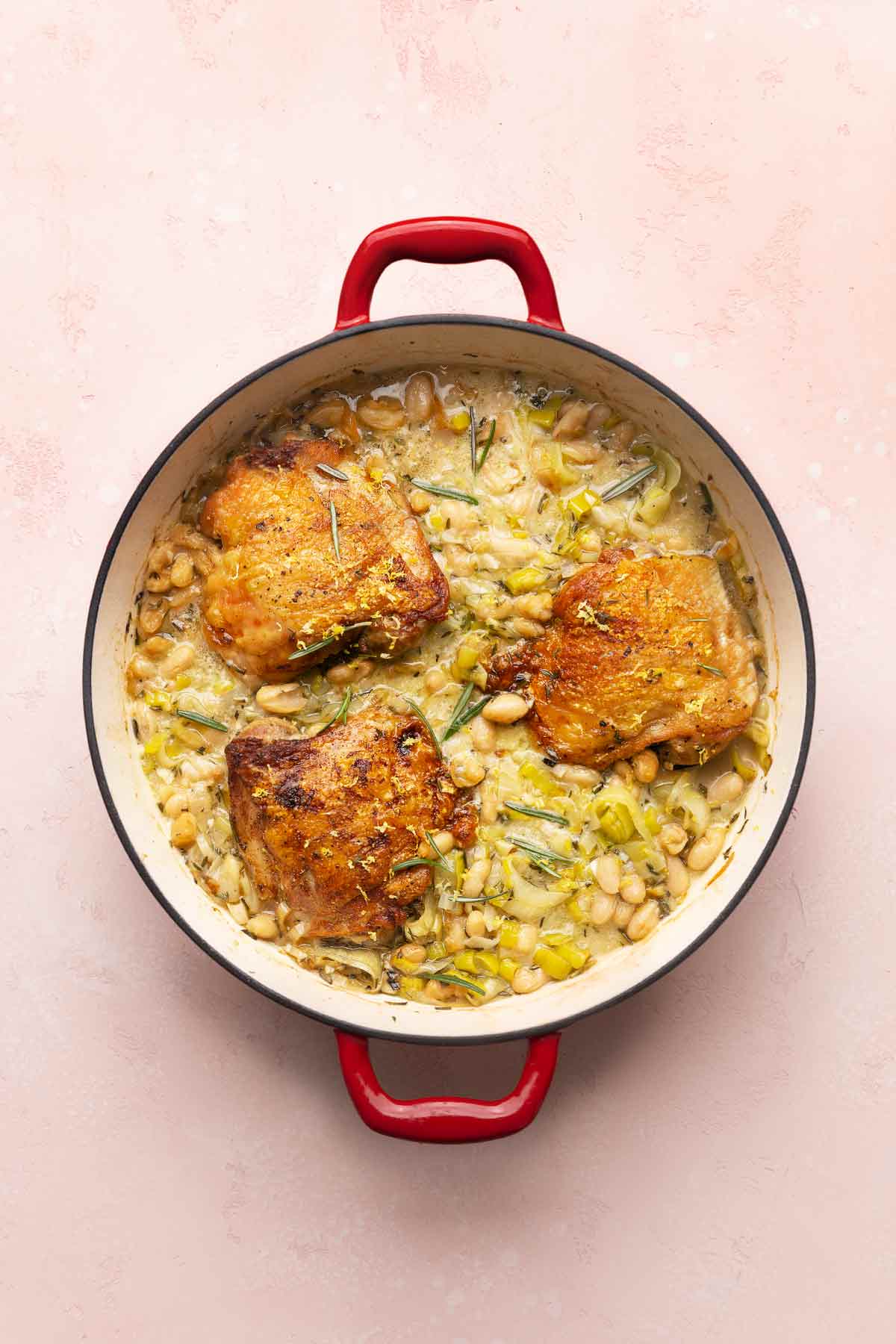
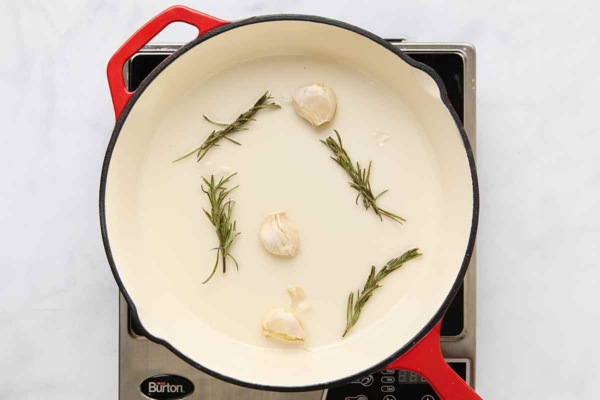
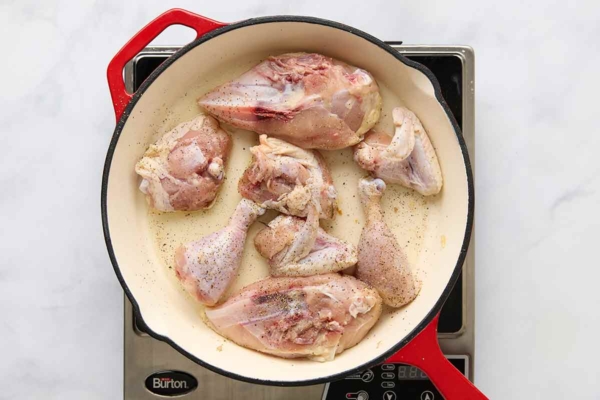
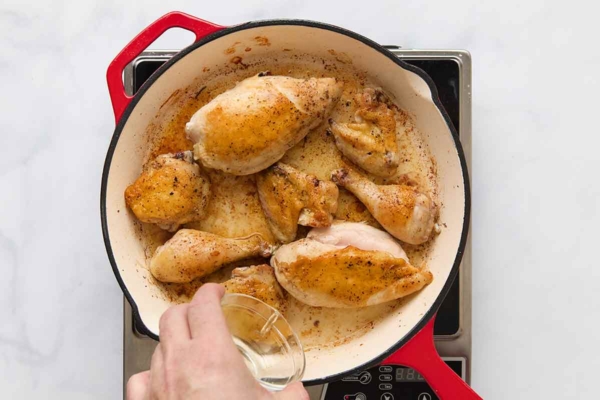
















I haven’t tried this yet but will soon. My mother in law who was from Sicily used to make a dish she called cacciatore with rabbit and had no tomatoes. Very similar to this. I haven’t made it in years. I hope I remember. This recipe will give me a basis. Rabbit being a bit tougher required what I called 2 cooking times. First browned and with the lid on. When all juices were gone, then the garlic, salt and rosemary which was worked into a paste in mortar and pestle were added along with vinegar and water for 2nd cooking. Each cooking took 45 min to an hour. I think the anchovy will be a great addition.
Kirby, I love the way you think.
What a rich, evocative memory—your mom-in-law’s rabbit cacciatore sounds like a beautiful blend of tradition and intuition. That two-stage cooking method makes perfect sense for rabbit. I agree: the anchovy in this version might just be the bridge between old and new.
If you do try this take on it, I’d be thrilled to hear how it stacks up against your memory. Either way, you’ve already brought something special to the LC table—thank you.